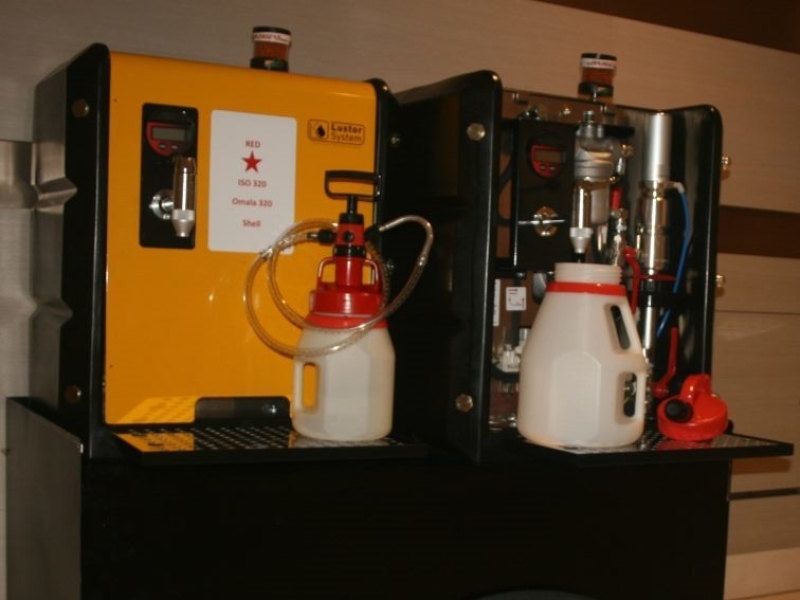The Level II MLA Body of Knowledge is an outline of concepts that a candidate shall have in order to pass the exam, in accordance with ISO 18436-4, Category II, Annex A.
References from which exam questions were derived can be found in the Domain of Knowledge.
I. Lubricant roles and functions (4%)
A. Base oil
1. Functions
2. Properties
B. Additive functions
1. Surface active additives and their functions
2. Bulk oil active additives and their functions
C. Synthetic lubricants
1. Synthetic lubricant types
2. Conditions dictating their use
D. Lubrication regimes
1. Hydrodynamic
2. Elasto-hydrodynamic
3. Boundary
II. Oil Analysis Maintenance Strategies (4%)
A. Fundamental aspects of Reliability-Centered Maintenance (RCM)
B. Fundamental aspects of Condition-Based Maintenance (CBM)
1. Predictive maintenance strategies
2. Proactive maintenance strategies
III. Oil Sampling (29%)
A. Objectives for lube oil sampling
B. Equipment specific sampling:
1. Gearboxes with circulating systems
2. Engines
3. Single and multi-component circulating oil systems with separate reservoirs
4. Hydraulic systems
5. Splash, ring and collar lubricated systems
C. Sampling methods
1. Non-pressurized systems
2. Pressurized systems - Low
3. Pressurized systems - High
D. Managing interference
1. Bottle cleanliness and management
2. Flushing
3. Machine conditions appropriate for sampling
E. Sampling process management
1. Sampling frequency
2. Sampling procedures
3. Sample processing
IV. Lubricant health monitoring (21%)
A. Lubricant failure mechanisms
1. Oxidative degradation
a) The oxidation process
b) Causes of oxidation
c) Effects of oxidative degradation
2. Thermal degradation
a) The thermal failure process
b) Causes of thermal failure
c) Effects of thermal degradation
3. Additive depletion/degradation
a) Additive depletion mechanisms
b) Additives at risk for depletion/degradation by the various mechanisms.
B. Testing for wrong or mixed lubricants
1. Baselining physical and chemical properties tests
2. Additive discrepancies
C. Fluid properties test methods and measurement units
1. Kinematic Viscosity (ASTM D445)
2. Absolute (Dynamic) Viscosity (ASTM D2983)
3. Viscosity Index (ASTM D2270)
4. Acid Number (ASTM D974 et al)
5. Base Number (ASTM D974 et al)
6. Fourier Transform Infrared (FTIR) analysis
7. Rotating Pressure Vessel Oxidation Test (ASTMD2272)
8. Atomic Emission Spectroscopy
V. Lubricant contamination measurement and control (25%)
A. Particle contamination
1. Effects on the machine
2. Effects on the lubricant
3. Methods and units for measuring particle contamination
4. Techniques for controlling particle contamination
B. Moisture contamination
1. Effects on the machine
2. Effects on the lubricant
3. States of coexistence
4. Methods and units for measuring moisture contamination
5. Demulsibility measurement
6. Techniques for controlling moisture contamination
C. Glycol coolant contamination
1. Effects on the machine
2. Effects on the lubricant
3. Methods and units for measuring glycol contamination
4. Techniques for controlling glycol contamination
D. Soot contamination
1. Effects on the machine
2. Effects on the lubricant
3. Methods and units for measuring soot contamination
4. Techniques for controlling soot contamination
E. Fuel contamination (fuel dilution in oil)
1. Effects on the machine
2. Effects on the lubricant
3. Methods and units for measuring fuel contamination
4. Techniques for controlling fuel contamination
F. Air contamination (air in oil)
1. Effects on the machine
2. Effects on the lubricant
3. States of coexistence
4. Methods for assessing air contamination
a) Air release characteristics (ASTM D3427)
b) Foam stability characteristics (ASTM D892)
5. Techniques for controlling air contamination
VI. Wear Debris Monitoring and Analysis (17%)
A. Common wear mechanisms
1. Abrasive wear
a) Two-body
b) Three-body
2. Surface fatigue (contact fatigue)
a) Two-body
b) Three-body
3. Adhesive wear
4. Corrosive wear
5. Cavitation wear
B. Detecting abnormal wear
1. Atomic emission spectroscopy methods
a) Inductively coupled plasma (ICP) spectroscopy
b) Arc-spark emission spectroscopy
2. Wear particle density measurement
C. Wear debris analysis
1. Ferrogram preparation
2. Filtergram preparation
3. Light effects
4. Magnetism effects
5. Heat treatment
6. Basic morphological analysis










